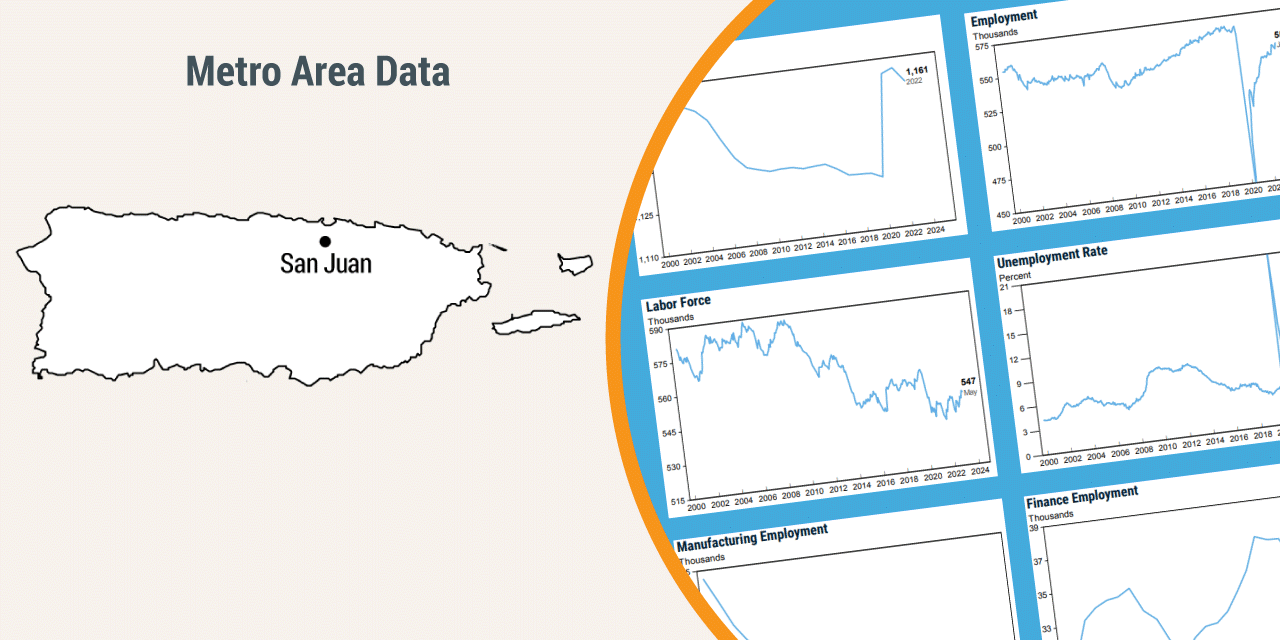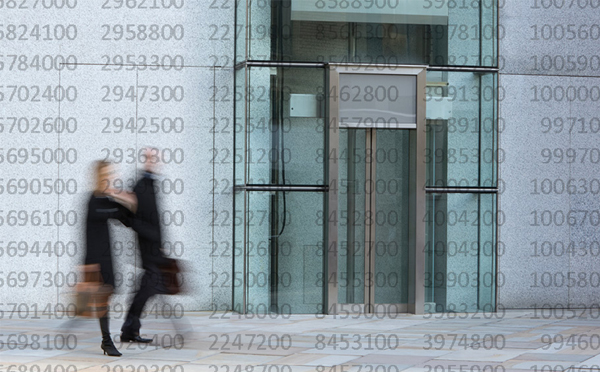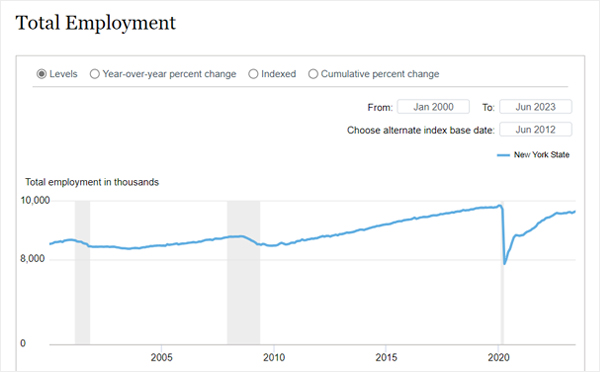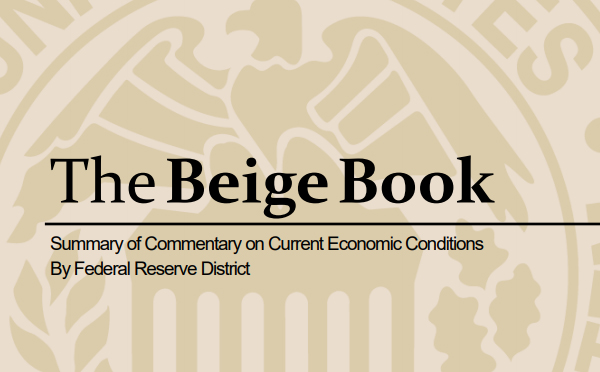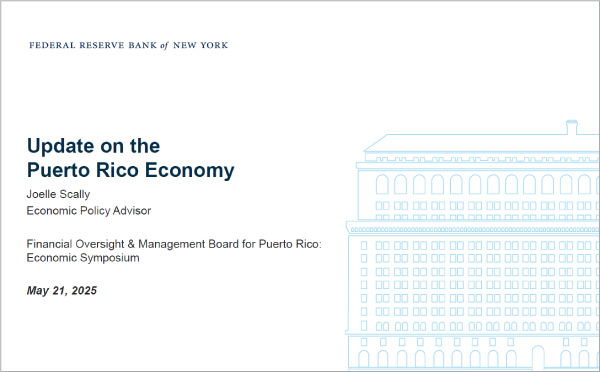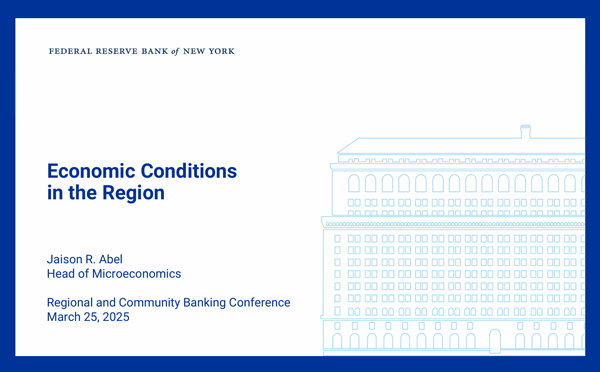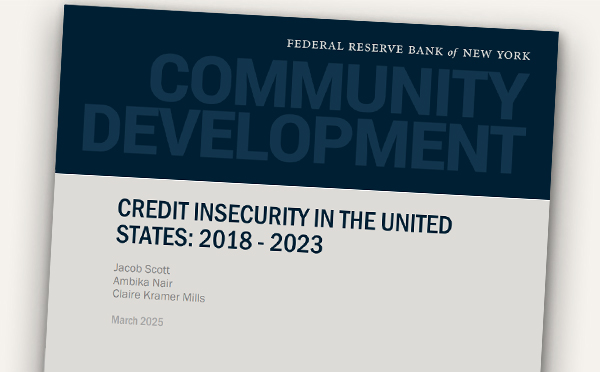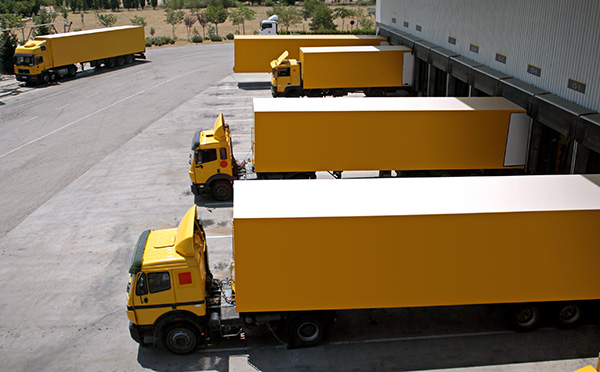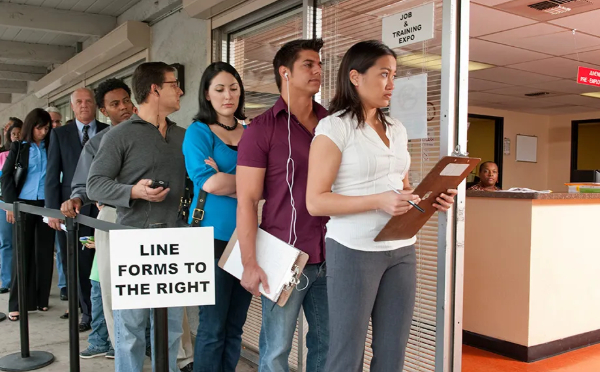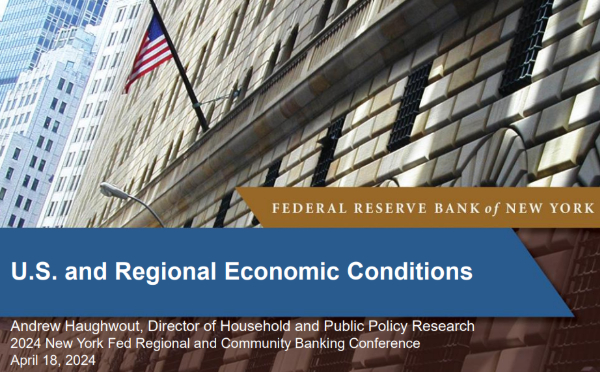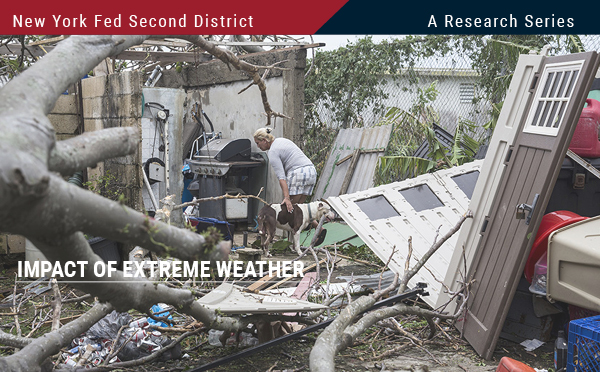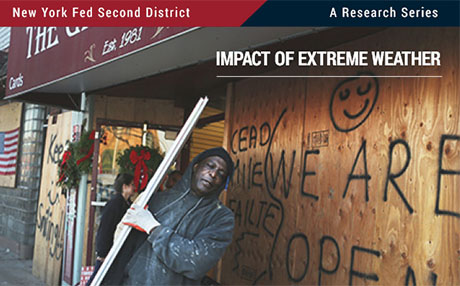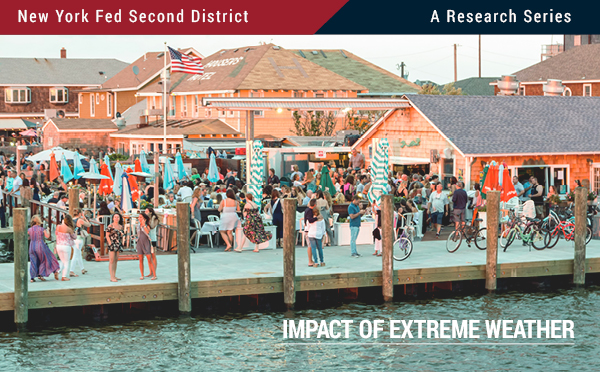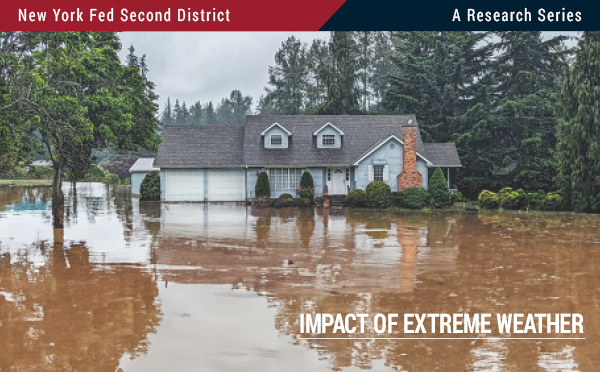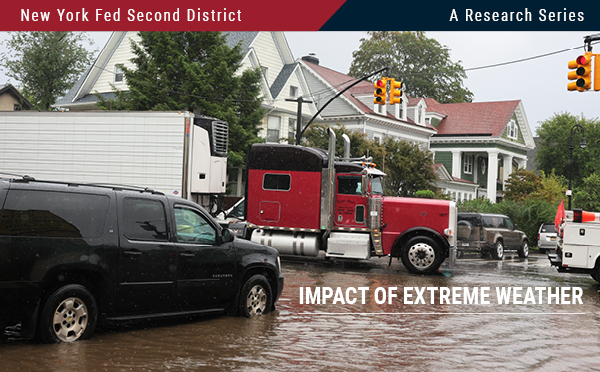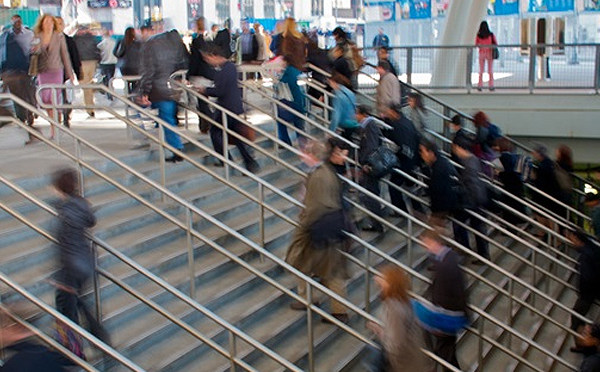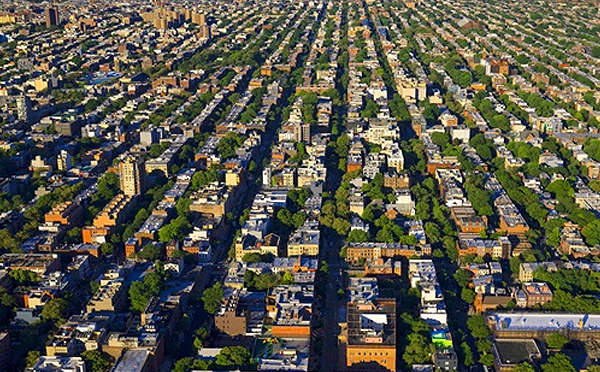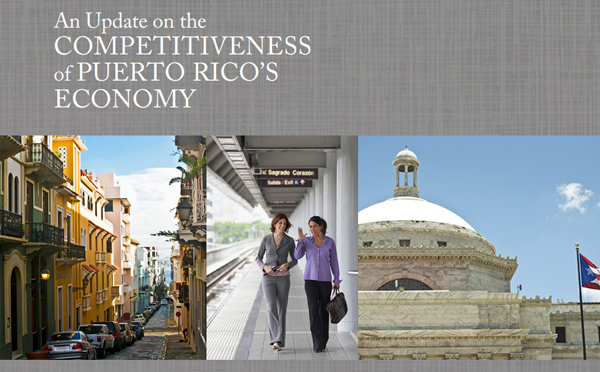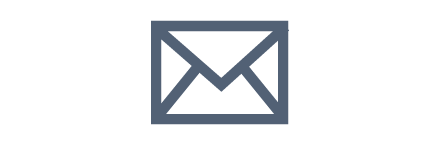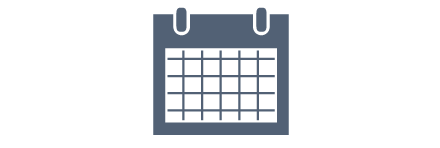Puerto Rico
The Commonwealth of Puerto Rico has a population of about 3.2 million. The San Juan-Caguas area is the largest of the island's seven metropolitan areas, representing roughly 75 percent of the island's economy. Puerto Rico had suffered from a severe and prolonged economic slump from 2006-17 with GDP, population, and employment all on a downward trend.
Economic and Demographic Trends
| Population 2024 | Pop growth 2024, 10-year change (%) | GDP 2023, billions ($) | Job growth 2024, 5-year change (%) | Median household income 2023 ($) | Median home price 2023 ($) | Pop share age 25+ with BA+ 2023 (%) | |
| Puerto Rico | 3,203,295 | -10.6 | 82 | 8.4 | 25,100 | 130,000 | 30.8 |
| U.S. Virgin Islands | 87,146 | -14.6 | 4 | -5.7 | 40,408 | 291,000 | 22.3 |
| United States | 340,110,988 | 6.5 | 27,812 | 4.7 | 76,170 | 325,000 | 36.2 |
Sources: U.S. Census Bureau; U.S. Bureau of Labor Statistics; IPUMS USA-University of Minnesota; Government of Puerto Rico Planning Board. Data retrieved through data.census.gov, Moody's Economy.com, or directly from source.
Notes:
Notes:
*Included for comparison. USVI GDP is from 2022.
**Figure for Puerto GDP is actually GNP, which is the preferred measure for Puerto Rico. GDP in 2023 is $118 billion.
**Figure for Puerto GDP is actually GNP, which is the preferred measure for Puerto Rico. GDP in 2023 is $118 billion.
The New York Fed publishes indicators, trends, research and analysis on our Second District. Explore the content below to learn more.
December 22, 2025
December 22, 2025
November 26, 2025
BY Jack Gutt | May 27, 2025
May 21, 2025
March 25, 2025
BY Jake Scott, Ambika Nair, and Claire Kramer Mills | March 6, 2025
By Jaison R. Abel, Richard Deitz, and Ben Hyman | March 5, 2025
BY Jaison R. Abel, Richard Deitz, Natalia Emanuel, and Benjamin Hyman | September 4, 2024
BY Jaison R. Abel and Richard Deitz | May 20, 2024
May 7, 2024
April 18, 2024
November 20, 2023
November 16, 2023
November 15, 2023
November 14, 2023
November 13, 2023
November 10, 2023
April 13, 2023
November 10, 2022
January 01, 2018
July 31, 2014
By continuing to use our site, you agree to our Terms of Use and Privacy Statement. You can learn more about how we use cookies by reviewing our Privacy Statement. 










